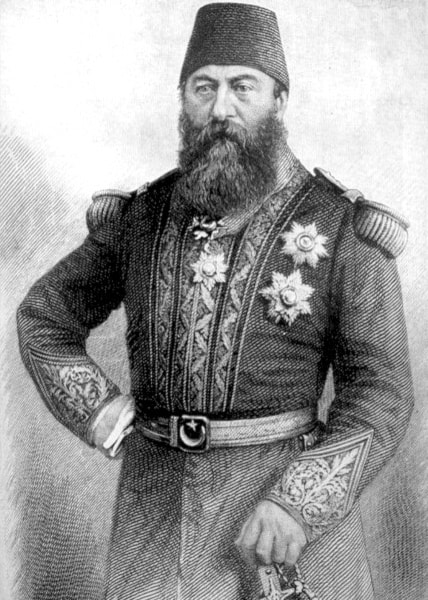Jim Cameron
Cranbrook has a Mount Baker. So does the State of Washington. In fact, so does Uganda.
All three are named for relatives of the same family, of whom our own town founder James Baker is a member.
There is a Baker's Falls in Sri Lanka and the seventh-largest lake of Africa is Lake Albert and if you think that is beside the point, it's not.
In creating the town of Cranbrook and thereby, according to some, denying nearby Fort Steele the opportunity to become the district railway centre, James Baker has been both lauded and vilified, depending from which side of the political and real estate fence the voices came.
He was a soldier, a scholar, a politician, a rancher, a scion of the landed gentry – in short, the quintessential English squire.
James Baker is a singularly interesting individual as were many of his family. Collectively, he and his relations, especially his brothers, create a fascinating tale rarely found outside of fiction, a saga of love and war, glory and sacrifice, wealth and scandal, a tale of derring-do of the highest level.
To understand the brothers is to more clearly understand James and to therefore more clearly understand the roots of our community.
We look first at Samuel White Baker Jr., the second-eldest of the four Baker boys, sons of Samuel Baker Sr., a wealthy Englishman whose investments in the sugar industry on the islands of Jamaica and Mauritius ensured that his heirs would want for neither money nor prestige.
Samuel White Baker, born June 8, 1821, in London, was an adventurous, clever and jovial lad. Handsome, not too tall, square-shouldered and barrel-chested with curly auburn hair, he was raised in a life of ease to become every bit the sporting English gentleman.
His somewhat haphazard schooling in England and Germany eventually brought him a degree as a civil engineer in 1841, following which he spent some time designing railways in Romania.
His true passion was, and always would remain, hunting – big-game hunting if possible – for which he designed a twenty-one pound, muzzle-loading rifle capable of blasting large things into much smaller things.
In 1843, he married Henrietta Martin, daughter of an English rector, in a double wedding in which Sam's eldest brother John married Henrietta's sister, Eliza.
In due time both couples sailed to Mauritius to oversee the family plantation.
Sam and Henrietta had seven children over the ensuing years, of which both sons and one daughter would die young.
In 1847 Sam moved his family to Ceylon (now Sri Lanka) to create an English settlement at the remote Nuwara Eliya, a mountain health resort where, joined by brothers John and Valentine, his brewery, crops and livestock eventually began to pay dividends.
It was seven years later when he and his family returned to England, all suffering poor health from the effects of their extended stay in the tropics.
Henrietta died of typhus in 1855, leaving Sam with four children whom – declaring himself incapable and the girls in need of a woman's touch - he turned over to his sister Mary (Min) to raise.
He fell into a funk and began a period of idle wandering, travelling to the Crimea to visit his brothers James and Valentine as they fought in the cavalry against the Russians during the Crimean War.
Although fearless by nature, Sam was not inclined towards soldiering and journeyed onward to Romania, overseeing the construction of a railway from the Danube to the Black Sea. He even considered joining David Livingstone's expedition to Africa but was refused on the grounds that he "lacked a useful occupation".
It was in 1859, during a visit to the Bulgarian City of Vidin on a hunting expedition to central Europe with Maharajah Duleep Singh, that Sam's life took a most dramatic turn.
While attending a whiteslave auction Sam became captivated with a young, blond, beautiful girl on the auction block.
He took up the bidding but was bested by the local Ottoman Pasha (personage of high rank) himself, who also had eyes for the fair maid.Her name was Florence Barbara Maria, daughter of a rich Hungarian-German officer of the Von Sass family who, along with his sons, was slaughtered in front of Florence's eyes during a rebellion a few years earlier. She escaped to Armenia but was eventually abducted, sold and groomed for a harem. She thus found herself under the hopeful gaze of her bidders.
Although outbid, Sam managed (possibly by bribing the auction attendants) to obtain possession of the girl.
Florence spoke Hungarian, Romanian, Turkish and German, the only language they had in common.
There ensued a determined flight by boat and carriage in which the couple managed to reach Bucharest and safety unchallenged by the Ottoman Pasha.
They appear to have become equally enamoured of one another and were married in England in 1865 in a service in which brother James and his wife Louisa were the only guests.
The entire situation hinted of scandal to Sam's aristocratic peers, including former supporter Queen Victoria who refused to accept Sam and Florence at court, suspecting they may have had marital relations prior to their wedding.
It was a serious social blow but neither Sam nor his young wife were easily felled.
What is in store for newlyweds Sam and Florence? Join us again next week for "Sam and Flo and the Quest for the Nile."
Correction: For the record - the United Church of Canada was established in 1925, not 1929, as suggested in last week's Janus column by someone whose former math teacher would likely shake his head in sorrow.
janusthenandnow@shaw.ca
